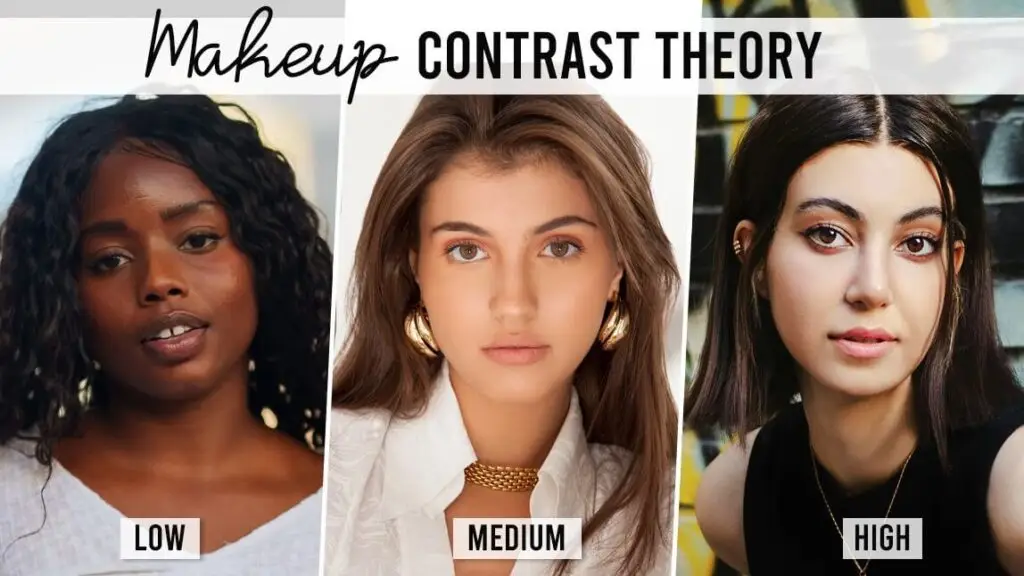We’re letting you know that this post contains sponsored links which Your Savvy Purse receives compensation for, which may impact their order of appearance.
If you’ve been feeling like your makeup doesn’t quite give you the glow-up you’re aiming for, or that certain techniques just don’t seem to flatter your face, it might not be you—it might be the way you’re approaching your makeup. Enter the “Contrast Makeup Theory”, a concept that’s been taking the beauty world by storm for its ability to elevate your look by focusing on balance and harmony, rather than just going with popular trends or “one-size-fits-all” makeup advice.
Whether you’re a makeup pro or just starting to experiment, the Contrast Makeup Theory can be a game-changer. But what exactly is it? Let’s dive in.
What is the “Contrast Makeup Theory”?
At its core, the Contrast Makeup Theory is all about creating a balanced interplay between light and dark in your makeup. It’s about emphasizing and playing off the natural contrasts of your face—your bone structure, skin tone, and the unique features that make you, well, you. Rather than applying makeup in a way that simply adds color, the Contrast Makeup Theory uses makeup to highlight, define, and enhance the natural contrast that exists on your face.
The theory is grounded in the idea that we all have certain features (like the shape of our eyes, cheekbones, or jawline) that can either be accentuated or softened by the way we apply makeup. By understanding how shadows and light interact with your face, you can strategically choose makeup that enhances your natural beauty and gives you a more sculpted, radiant look.
The Basics: Playing with Light and Shadow
When we talk about contrast, we’re really talking about the strategic placement of light and dark makeup products:
- Light shades (think: highlighters, lighter foundations, concealers) are used to highlight and bring forward the features you want to emphasize.
- Dark shades (such as contour, bronzer, or deeper eyeshadows) are used to create shadow and define the areas you want to recede or shape.
This concept is similar to contouring and highlighting, but the key difference with Contrast Makeup Theory is that it’s more focused on natural enhancement rather than “shaping” or “sculpting” your face into something it isn’t.
How to Apply the Contrast Makeup Theory
1. Match Your Makeup to Your Natural Features
The first step to applying the Contrast Makeup Theory is understanding your face shape, bone structure, and skin tone. These elements will help you determine where to place lighter and darker shades to enhance your natural features.
- Face Shape: Does your face have a round shape? Oval? Square? Each face shape has different points that benefit from highlighting and contouring.
- Bone Structure: Do you have high cheekbones, a defined jawline, or a more angular nose? These features can help guide where you place your contrasting shades.
- Skin Tone: Lighter and darker shades should complement your natural skin tone. For example, use warm tones if you have warm undertones in your skin, or cool tones for a cooler undertone.
2. Understand the Light and Dark Placement
Once you’ve mapped out your face and figured out which features you want to emphasize, it’s time to apply your makeup. Here’s how you can use light and dark tones to accentuate your features:
- Lighter Shades (To Highlight):
- Under the eyes: A lighter concealer or brightening cream under the eyes can make your eyes appear bigger and more awake.
- High points of the face: Apply highlighter to the tops of your cheekbones, the bridge of your nose, your cupid’s bow, and your brow bone. These areas naturally catch light and can make your face look lifted.
- Center of the forehead and chin: Use a lighter foundation or concealer to bring attention to the middle of your face. This gives the appearance of more symmetry.
- Darker Shades (To Contour):
- Under the cheekbones: A subtle contour just below the cheekbones can add definition and create the illusion of higher, sculpted cheeks.
- Jawline and temples: Applying a bit of contour or bronzer to the jawline and temples helps create balance by adding depth and dimension, making your face appear more angular and defined.
- Sides of the nose: For those who like to contour the nose, applying a darker shade along the sides can give it more definition and structure.
3. Don’t Overdo It—Keep It Natural
The beauty of the Contrast Makeup Theory is that it’s all about natural enhancement. This isn’t about dramatic, Instagram-style contouring that completely changes your face. The goal is to enhance your natural features, not to mask them.
To avoid overdoing it, start with a light hand. You can always build up intensity, but it’s harder to tone down bold makeup once you’ve applied it. Blend, blend, blend! The key to success with this technique is seamless transitions between the light and dark areas on your face.
Example Look: The Everyday Contrast Makeup Application
To make the theory more relatable, here’s a simple step-by-step example of how you can apply the Contrast Makeup Theory in a daily makeup routine:
- Base: Start with your usual foundation, aiming for a natural finish. Make sure it matches your skin tone for a smooth, even base.
- Concealer: Apply a brightening concealer under your eyes, down the bridge of your nose, and in the center of your forehead and chin. This brings light to the center of your face.
- Contour: Use a contour powder or cream to subtly contour your cheekbones, jawline, and the sides of your nose. The idea here is to add depth, not to make the contour too obvious.
- Blush: Apply a soft blush to the apples of your cheeks to add color. It’s important to choose a blush that works with your skin tone and doesn’t clash with the rest of your makeup.
- Highlight: On the high points of your face, apply a soft highlight to areas like the tops of your cheekbones, the bridge of your nose, the center of your forehead, and your cupid’s bow. This adds a natural glow and brings forward those areas.
- Eyes and Lips: Keep it balanced by sticking to neutral shades for your eyes and lips, or apply a pop of color if you want more contrast (think a bold lip with neutral eyeshadow or vice versa).
Why the Contrast Makeup Theory Works
- It enhances your natural beauty: Instead of covering up or trying to create dramatic changes, the Contrast Makeup Theory works with your face’s natural structure, bringing out your best features.
- It creates depth and dimension: By using a combination of light and dark shades, you add balance to your face, making it appear more sculpted and dimensional without the need for extreme contouring.
- It’s customizable: Whether you have a round face, square jaw, or heart-shaped features, you can adjust the light and dark placements to suit your unique face shape.
Final Thoughts: Ready to Try the Contrast Makeup Theory?
If you’ve ever felt like your makeup wasn’t quite working for you, or that you just couldn’t find the right way to highlight your features, the Contrast Makeup Theory could be the key to a more flattering, balanced makeup look. By understanding the natural contrasts of your face and working with them, rather than against them, you can achieve a glowing, sculpted look that feels effortlessly beautiful.
So, are you ready to ditch the one-size-fits-all makeup techniques and embrace a more personalized approach to your beauty routine? The Contrast Makeup Theory might just be the game-changer you’ve been waiting for!



